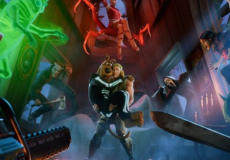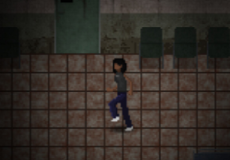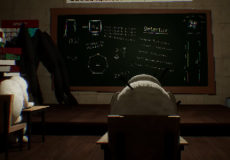

No, I’m not a Human
Advertisement
No, I’m not a Human is a narrative survival game that centers on judgment and trust during a global disaster. The player remains confined inside a small shelter as the outside world collapses due to extreme solar radiation. During the night, strangers arrive seeking entry, claiming to be survivors. Some are human, others are entities imitating them. The objective is to decide who to let in and who to turn away, using limited information and unreliable clues. Every choice alters the sequence of events, shaping who lives, who dies, and how long the player can maintain safety within the house.
Advertisement
Similiar games
No, I’m not a Human is a narrative survival game that centers on judgment and trust during a global disaster. The player remains confined inside a small shelter as the outside world collapses due to extreme solar radiation. During the night, strangers arrive seeking entry, claiming to be survivors. Some are human, others are entities imitating them. The objective is to decide who to let in and who to turn away, using limited information and unreliable clues. Every choice alters the sequence of events, shaping who lives, who dies, and how long the player can maintain safety within the house.
Structure and Gameplay Loop
The experience is divided into alternating cycles of day and night. Daytime serves as a preparation phase—checking supplies, observing those already inside, and listening to broadcasts that provide potential indicators for spotting impostors. Nighttime becomes the core decision phase. Knocks on the door require quick but thoughtful responses. Each guest must be evaluated based on conversation, appearance, or reported behavioral traits. One mistake can bring irreversible consequences, as allowing an impostor entry often leads to the end of the run.
Core interactive systems include:
· Door management and nighttime visitor assessment
· Trait recognition through limited visual or verbal cues
· Radio updates revealing new signs of imitation
· Relationship tracking with survivors inside the shelter
· Multiple branching outcomes based on accumulated decisions
Together these systems create a cycle where analysis and instinct must align under constant tension.
Decision Logic and Uncertainty
No, I’m not a Human builds its tension through incomplete information. Traits that define an impostor—such as irregular speech patterns, absence of small injuries, or strange eye contact—are never absolute. Some visitors may display mixed signals, forcing the player to weigh probability against fear. Refusing entry might condemn real humans to death, but trust can be equally fatal. As time progresses, the line between real and false becomes blurred, transforming every interaction into a moral and strategic challenge.
Progression and Variability
Each playthrough introduces randomization in visitor behavior, clue order, and outcome probability. The system ensures that no two runs unfold identically. Players gradually learn to recognize patterns but can never achieve perfect certainty. The game tracks survival days, relationships, and group stability to determine ending variations. Some conclusions involve solitary survival, others collective escape or full collapse. Because information resets with every new attempt, experience becomes the only persistent resource.
Discuss No, I’m not a Human




















